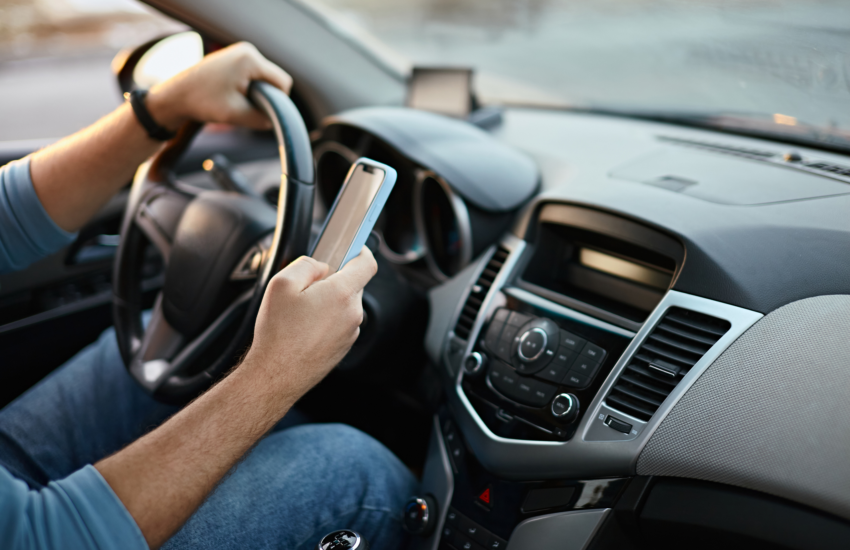New tech in South Australia (SA) aimed at monitoring cell phone use while driving is set to go live soon, serving as just one recent example of localities in addition to the U.S. working to curb distracted driving.
SA’s first mobile phone detection cameras (MPDCs) will roll out under a $15.9 million initiative as the State Government pushes to reduce road trauma caused by driver distraction, on roadways in Darlington, Torrensville, Regency Park, Hindmarsh, and Gepps Cross. The State Government’s selection of camera locations was determined with consideration of research by Adelaide University’s Centre for Automotive Safety Research on crash trends and to target busy road corridors across different areas of Adelaide, the capital city of SA.
The cameras were successfully trialed earlier this year.
“With a devastating number of lives lost in 2023, these cameras serve as another crucial tool to address driver distraction, said Joe Szakacs, SA Minister for Police, Emergency Services, and Correctional Services. “Drivers must give their full attention to the driving task, to ensure not only their own safety, but that of other road users around them.
“We know inattention is the leading cause of death and serious injury on South Australian roads, with using a mobile phone while driving increasing your crash risk by at least four times.”
SA Police Assistant Commissioner Ian Parrott says distracted driving played a significant part in causing crashes that resulted in 1,285 injuries and 198 fatalities over the last five years in South Australia. He shared that between Jan. 1, 2018 and Dec. 31, 2022, SA Police issued nearly 34,000 tickets for using a phone while driving.
Pending final technical and environmental review of the five locations, the cameras are expected to be installed on existing digital variable message signs and operational by June.
A three-month educational period will run from June to September wherein drivers will not be fined or given demerit points on their licenses for using cell phones.
After, drivers using phones will be fined $540 plus $99 for victims of crime levy and given three demerit points.
All funds collected from the fines will be returned to the Community Road Safety Fund, which is used to make road safety improvements, operate education programs, and pay for public advertising.
“Inattention continues to be a contributing factor in around half of all lives lost and over a third of serious injuries on South Australian roads,” a news release from the SA Government states. “Delivering another commitment of the state’s Road Safety Action Plan 2023-25, MPDCs save lives by detecting and deterring drivers who put themselves and others at risk by engaging in this dangerous behaviour.”
The cameras capture high-quality images from multiple angles through the driver’s windscreen then artificial intelligence software determines whether drivers are on their mobile phones. Photos of drivers that are flagged are validated by SA Police.
“I truly believe that society has had enough. I can promise you that families who have lost loved ones never, ever recover from the heartache. We urge everyone to drive so that they, and all road users always get home safe to their families, every day,” said Darren Davis, Get Home Safe Foundation president.
MPDCs are already used in New South Wales, Victoria, and Queensland. The cameras are currently operating in the Australian Capital Territory under the three-month grace period.
More than $250 million will be invested over the next five years in making SA roads safer.
Some examples of distracted driving mitigation campaigns in the U.S. include the “Save a Life Tour,” new crash avoidance advanced driver assistance system (ADAS) features, and more.
The tour visits schools to educate teens about the importance of remaining alert on the road through workshops and simulations. It is also an international effort.
Tech companies, such as Google, continue to work with the Insurance Institute for Highway Safety (IIHS), other road safety advocates, the Alliance for Automotive Innovation (Auto Innovators), and regulators to raise awareness about and prevent distracted driving with recently showcased technologies.
Those technologies included in the showcase were driver monitoring systems, restriction- and automated enforcement-based prevention features, and crash avoidance features.
IIHS contends that phones can be used to prevent distraction through the “do not disturb” feature, which blocks incoming calls and notifications while the user is driving, and apps can encourage safer speeds and provide basic crash avoidance capabilities.
In the UK, another effort at curbing distracted driving, augmented reality (AR) head-up display (HUD), could be tested on roads sometime this year. Researchers from the University of Cambridge, University of Oxford, and University College London researchers are collaborating with Google to develop the technology so that it can be tested in vehicles.
Researchers believe the technology could improve road safety by displaying potential hazards as high-resolution 3D holograms directly in a driver’s field of vision in real-time. The system uses a 3D laser scanner and lidar data to create a 3D representation of London streets.
“The system they developed can effectively ‘see through’ objects to project holographic representations of road obstacles that are hidden from the driver’s field of view, aligned with the real object in size and distance,” a post about the research on the University of Cambridge’s website states. “For example, a road sign blocked from view by a large truck would appear as a 3D hologram so that the driver knows exactly where the sign is and what information it displays.”
Featured image credit: perfectlab/iStock
© 2023 DRIVEN COMMUNICATIONS Inc. All Rights Reserved.

